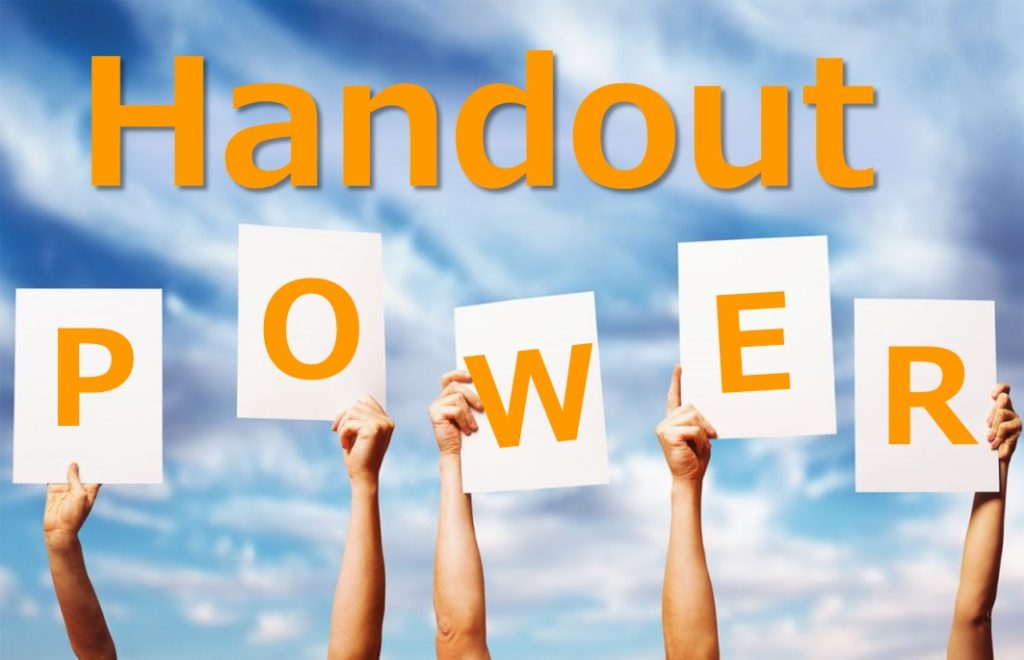To have a handout or not? That is the question.
Almost any presentation could be enhanced with a handout.
Handout benefits to the presenter:
- Your presentation will be more memorable
- Audience members can easily contact you
- Establishes your credibility
- Shows that you care about the audience
- You can have additional information on the handout
- A handout can keep you on track during your presentation
Handout benefits to the audience include:
- A preview of the content of your presentation
- A take-away reminder of the concepts in the presentation
- Not having to take many notes
- A place to take notes, if they want
- Action item reminders
- Additional information or resources
- A way to contact you
While a keynote presentation may not need a handout, having some sort of take-away item with your contact information on it is a good idea so that audience members can remember and contact you if they want. You could have large, colorful postcards with key information and your contact information on it, as an alternative to the standard handout. You can get 500 over-sized postcards (about 8.5 by 5.5), printed on both sides on Vistaprint.com for about $70.
Some handout tips:
1. Consider your audience and how the handout will be used.
For a webinar, I provided a one-page agenda-style handout, with a link to the slides. The link to the handout was emailed to the participants, and I also provided a link to the handout at the start of the webinar. Webinar handout
For an educational and interactive talk, which I gave to 3 chapters of IAAP (the International Association of Administrative Assistants), I had a 4-page handout, which included a cover page, a page for note-taking (with some fill-in the blanks), a page for an interactive exercise, and a page that summarized a concept. This handout was sent to the organization in advance so they could get the presentation approved for continuing education units. Workshop handout
For a presentation to teenagers, I used a lot of graphics and didn’t expect them to write much. I also included a page with examples that they could refer to later. Teen talk handout
2. Leave some white space—in case the audience members want to jot down a few notes.
3. Put your contact information on every page of your handout.
4. Add additional resources, if applicable (also cite references).
5. Check and double check your handouts for typos/errors. Have someone else proofread.
6. Make more copies than you think you will need. I bring extras, even if the meeting planner says they will make copies.
7. Don’t print out your PowerPoint slides as handouts. If your PowerPoint slides have enough information on them to be your handout, you have too much information on your slides.
8. Distribute your handouts at the time that makes sense for your presentation.
- Before you speak for most presentations, if the audience will be taking notes, or interacting with the handout
- After you speak, if there is some element of surprise (or, you could have your handout in an envelope with “do not open until requested,” which creates suspense).
- After you speak, if your handout is just informational, and not needed during your presentation
Do you have some handout tips?


One Response